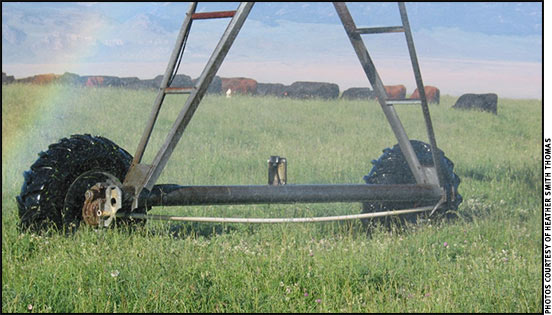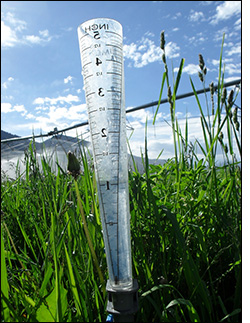
Irrigated Pasture Management
Consider pasture management instead of harvesting hay.
Irrigated pasture can be more productive than harvesting hay on the same ground. Jim Gerrish, owner of American Grazinglands Services in May, Idaho, has been involved with innovative grazing systems for many years, first as a grazing specialist with the Forage Systems Research Center at the University of Missouri and now as a stockman/consultant in central Idaho, practicing these principals on the Circle Pi Ranch in the Pahsimeroi Valley.
“Here on this ranch we do daily pasture rotation with cattle on center pivots. Irrigated pasture has high production potential and ability to regrow rapidly. We do a fast rotation on these, putting water back on a strip the day after it’s grazed. This accelerates the regrowth and creates opportunity for creating another crop,” he says.
“Well-managed pasture under center pivots will meet or exceed hay production. So you’re not giving up any productivity by grazing instead of haying. You have more days of active growth,” says Gerrish. Grass only grows up once for hay (or twice if you have a long growing season), but you have multiple cropping with grazing.

Jim Gerrish, owner of American Grazinglands Services in May, Idaho, uses multiple rain gauges that he moves as the pivots move, and periodically checks them. This gives an idea of how much water they are actually putting out.
Gerrish explains that they graze their pastures four times in a season. Compared with the area’s short hay growing season, he says they average 40% to 50% higher dry-matter production with the livestock grazing it instead of harvesting it as hay. They capture the increased production with intensive grazing management.
The pastures are strip-grazed under the pivots, using the inner circle design.
“We have the stock water spaced out along the inner circle, which makes moving the temporary fences very efficient. It shortens the distance we have to go, and the travel distance to water isn’t very great for the cattle,” he explains.
It doesn’t take much time to move the electric fence.
“On our 300-acre pivot, the strips of fence I move each day are about 1,000 feet, and it takes about 25 minutes to take a fence down for the day’s move and reset it for tomorrow’s move. This is not much time out of the day,” he says.
“Last year we started monitoring water output from the pivot. A new pivot is very uniform in its distribution of water. When a person uses creek water like we do — from snow melt on the mountain — it is gritty and scours the nozzles,” says Gerrish.
He adds, “We had our pivots renozzled five years ago, and when we checked their output four years later, I was shocked at the variation across the pivot. Statistical variability from nozzle to nozzle to nozzle was 20%. If we set a pivot to put on an inch of water every three days, we were actually getting somewhere between 0.8 and 1.2 inches on most of the nozzles.”
He uses multiple rain gauges that he moves as the pivots move, and periodically checks them. This gives an idea of how much water they are actually putting out.

Editor’s Note: Heather Smith Thomas is a cattlewoman and freelance writer from Salmon, Idaho.





